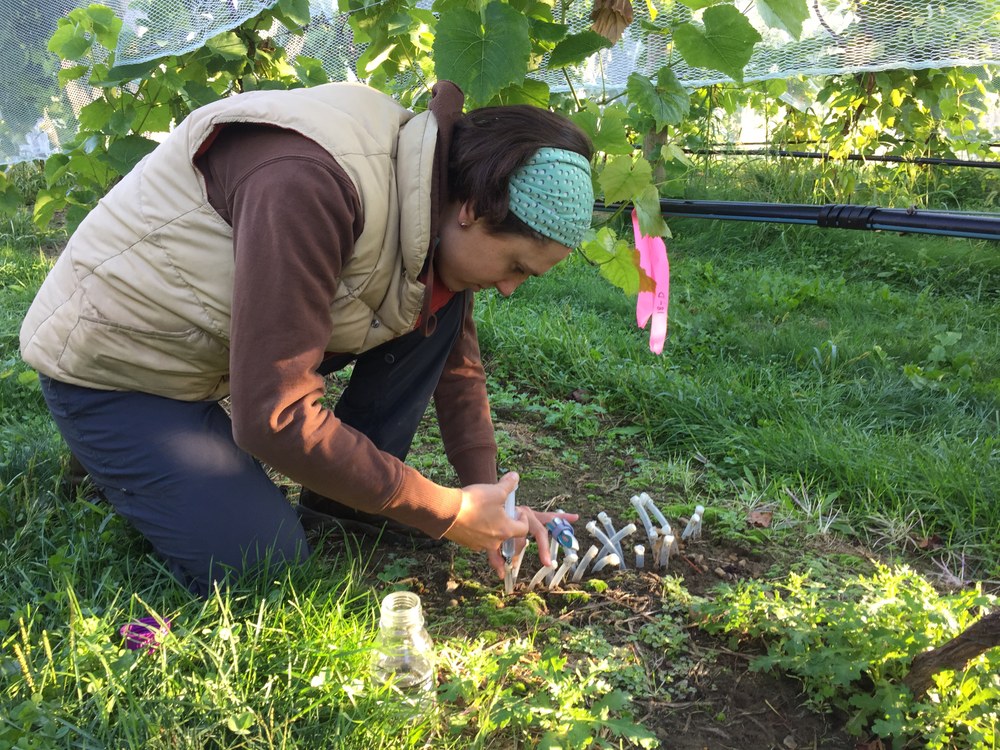My research examines how belowground competition by grass cover crops may improve vine production with a particular focus on how competition impacts deep root function.

Suzanne injecting stable isotopes of water to trace root water extraction of grape vines
Advisers: Dr. David Eissenstat and Dr. Michela Centinari
Research Summary
Standard ground cover maintenance in northeastern vineyards includes resident groundcover or seeded cover crops in the inter-row and bare soil maintained under vines with multiple applications of herbicide. Ecological benefits of cover crops have been found in the form of herbicide elimination and reduction in leaching of total nitrogen, dissolved organic carbon, and insecticide. This reduction in growth may be enhanced by choosing rootstocks known to impart low vigor to the scion. Presently, studies report high variability in growth reduction by cover crops; this unpredictability causes cover crops to be a high-risk practice to adopt. To reduce risk and improve mechanistic understanding of cover crop-vine competition, I am examining cover crop applications in a Noiret vineyard that varies in two rootstock genetics. In particular, I am focusing on resource competition and microbial diversity at a variety of depths to better explain factors that influence improve wine grape production through growth regulation.
Funding.
NE Sustainable Agriculture and Research Education Grant
NASA Space Grant Graduate Fellowship
Plant Science Department

